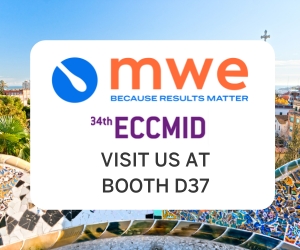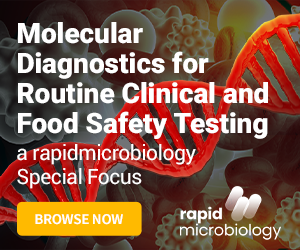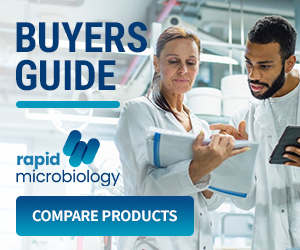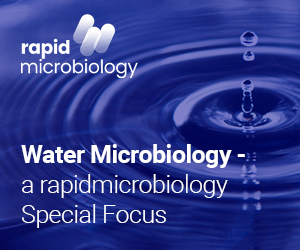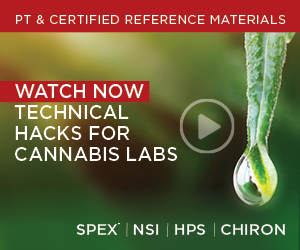Home and Beauty Products - Rapid Micro Methods
Key Points
- Standard methods culture-based, labour-intensive and can take up to five days to produce a result.
- Modern production management systems are changing to require faster results..
- The trend towards ‘greener’ products is resulting in more microbiologically vulnerable formulations..
- Rapid methods developed for use in the sector is limited, technologies such as ATP bioluminescence show considerable potential to reduce labour costs and reporting times.
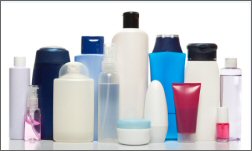 The home and beauty industry manufactures a diverse collection of very different products, including cosmetics, shampoo, deodorants, disinfectants and detergents. These clearly have highly variable chemical and physical characteristics and they also differ widely in their microbiology. It is helpful to split home and beauty products into two broad categories to consider their microbiology in more detail.
The home and beauty industry manufactures a diverse collection of very different products, including cosmetics, shampoo, deodorants, disinfectants and detergents. These clearly have highly variable chemical and physical characteristics and they also differ widely in their microbiology. It is helpful to split home and beauty products into two broad categories to consider their microbiology in more detail.
Cosmetics and Personal Care Products Cosmetics and personal care products range from mascara to toothpaste, from eye shadow to shower gel and from lip balm to bath foam. Some of these products are quite simple and comprised only of synthetic chemicals, while others are highly complex and contain many natural ingredients derived from plants and other sources. The cosmetics sector is perhaps the most highly developed from the point of view of microbiological testing and shares some common ground with the pharmaceutical industry. This is probably because cosmetics are more strictly regulated than home care products. The US Food, Drug and Cosmetic Act defines cosmetics as “articles intended to be rubbed, poured, sprinkled, or sprayed on, introduced into, or otherwise applied to the human body or any part thereof for cleansing, beautifying, promoting attractiveness, or altering the appearance,” and a broadly similar definition is given in the EU Cosmetics Directive (76/768/EEC). Neither requires cosmetics to be sterile, but rather that the microbial population be low and stable and that harmful organisms be absent. This applies particularly to products designed to be applied around the eyes and other sensitive areas, or for use by young children, the elderly and the immuno-compromised. While no mandatory limits are given for microorganisms, industry guidance recommends a total viable count (TVC) of <100 CFU/g for higher risk products (eye and baby products etc.) and <1,000 CFU/g for all others. Harmful microorganisms of particular concern are Pseudomonas aeruginosa, Staphylococcus aureus, Candida albicans and E. coli. These should not be detectable. Cases of infection and even death caused by contaminated cosmetics and personal care products, including shampoo, mascara and hand cream, have been reported.
Manufacturers of cosmetics and personal care products are generally able to meet these standards by careful application of GMP. Screening raw materials, especially those derived from natural sources, for contamination, monitoring the production environment and strict hygiene practices all contribute to low contamination levels at the point of manufacture. However, once the packaging has been opened the product becomes very vulnerable to contamination from the user and from the environment. Most cosmetics are designed for multiple use and must withstand storage under a variety of conditions, including warm and moist bathrooms. Many contain appreciable amounts of water and can potentially support microbial growth, leading to product spoilage or pathogen contamination. For this reason an effective preservative system is usually essential. This must be safe for the consumer, used at the lowest possible level, yet effective against a wide range of spoilage organisms and pathogens over prolonged storage. The only way to assess a preservative system properly is by conducting a microbial challenge test. An additional problem for manufacturers is growing consumer demand for ‘preservative-free’ products. This can result in reformulation, reduced product life and increased risk of contamination. The requirements for microbiological testing are determined by these concerns and can be summarised as follows:
- Screening raw materials and finished products for TVC and specific pathogens
- Process water testing
- Hygiene monitoring in the production environment
- Microbial challenge testing
A microbiological risk analysis approach is the preferred means of determining the type and frequency of testing, taking into account the nature of the product, how and where it is applied, the type of user and other relevant factors. This approach is now set out for cosmetics in an International Standard (ISO 29621:2010). In addition, there are recent ISO standards setting out conventional methods for bacterial counts, yeast and mould counts and detection of the four pathogens of particular concern. The FDA Bacteriological Analytical Manual also includes standard methods for cosmetics.
Home care products Home care products are equally diverse and include laundry and dishwasher detergents, disinfectants, surface cleaning products, fabric softeners and furniture polish. As with cosmetics, composition is very variable. Home care products are not regulated in the same manner as cosmetics, but they should be safe for consumers to use under all reasonable conditions. Contamination with specific pathogens is not generally an issue and there are very few reports of microbial infections resulting from home care products. The formulation of these products, in terms of pH, surfactants, solvents, chelating agents and antimicrobial compounds, tends to make them less vulnerable to microbial contamination. Nevertheless, microbial growth can occur and may lead to obvious spoilage, or to a gradual loss of product performance. As with cosmetics, where products are vulnerable to microbial contamination problems can be minimised by regular monitoring of raw materials and finished products, by good process hygiene practice and by monitoring the production environment.
Microbiological challenge testing is less likely to be required, unless the product is known to be vulnerable to contamination. This situation may change with the trend towards less chemically aggressive formulations designed to reduce environmental impact and by new restrictions on solvent use. New ‘green’ products may be more susceptible to microbial growth and spoilage and are likely to require additional monitoring and testing. Despite the differences, the requirements for microbiological testing of home care products are much the same as those for cosmetics listed above.
Once again a risk analysis approach may help to determine the type and frequency of testing, but unlike cosmetics there is no standard method for conducting the analysis. Home care products also differ from cosmetics in that, as far as we are aware, there are no international standard methods for microbiological testing. Many manufacturers have devised their own in-house methods and there is likely to be considerable variation. The only standard methods available are those used to test the performance of disinfectants. However, some manufacturers have expressed an interest in developing general guidance for microbiological testing through relevant trade associations.
Microbiological methods Traditional culture-based methods are still widely used in the home and beauty industry, especially in the home care products sector, where a 2010 survey revealed that of 16 major manufacturers in North America and Europe, only three were using rapid microbiological methods (RMM) routinely. Clearly the demands for rapid results are not as great as they are for manufacturers of perishable foods and highly regulated pharmaceuticals, but this may change as businesses embrace lean manufacturing systems.
General considerations There are two potential problems for microbiologists testing cosmetics and home care products. One is the toxicity of the preservation system, which may affect the detection of viable organisms, and the other is the water-immiscibility of some products.
When preparing initial dilutions of preserved products it is important to include an appropriate neutraliser that will inactivate the preservation system so that microbial growth is not inhibited. The effectiveness of the neutraliser must also be carefully validated. Suitable neutralisers and validation methods for cosmetics are given in the relevant ISO standards.
When preparing initial dilutions of water-immiscible products, a solubilising agent, such as polysorbate 80, should be included at a concentration sufficient to keep the sample in solution/suspension.
Rapid methods
The great diversity of cosmetics, personal and home care products means that some RMM designed for use in other sectors could sometimes be applicable, especially those designed for use in the pharmaceutical sector. However, there are a number of commercially available test kits and equipment with stated applications in the home and beauty industries, and it is these that are described below. Most are designed to perform rapid TVCs and microbial limits tests for raw materials and finished products, but some technologies can also be used in preservative efficacy testing (PET) and the detection of specific pathogens.
Culture-based systems Many RMM rely on culture techniques to detect microbial contamination, either directly or indirectly; it is the detection system that makes the method rapid.
All living cells produce a small amount of fluorescence (autofluorescence) and this can be used to detect microbial colonies growing on a solid surface long before they are visible to the naked eye. This technique is particularly useful for filterable samples, where a membrane filter can be incubated on a conventional nutrient medium and scanned using highly sensitive imaging systems to detect microcolonies, sometimes several days earlier than using traditional colony counting methods. Autofluorescence detection has been commercialised by Rapid Micro Biosystems as Growth Direct™, which uses a large area CCD imaging system without magnification to detect developing microcolonies.
The Soleris™ system supplied by the Neogen® Corporation is automated and utilises an LED and a photo detector to monitor colour changes caused by bacterial growth in a specially designed vial containing a growth medium and colour indicators. The vial is inoculated with a sample dilution and as bacteria grow they produce changes in pH and other biochemical indicators leading to a colour change in the vial. The instrument monitors each vial and records the time taken to produce a detectable colour change, which is related to the initial microbial count. Soleris is said to be capable of producing a result for TVC within 18 hours.
Indirect growth detection can also be achieved by measuring changes in the impedance of the growth medium using a pair of electrodes. A number of devices based on this concept have been developed, such as Sy-Lab’s µ-Trac® and BacTrac® instruments, which can be used for TVC estimates in cosmetics, toiletries and other homecare products.
Non culture-based systems
Adenosine triphosphate (ATP) bioluminescence is a well established rapid method for assessing contamination levels in many consumer products and raw materials. It utilises a specific substrate and enzyme combination, luciferin/luciferase, to break down microbial ATP from growing cells and produce visible light, which can be measured using a luminometer. The amount of light is related to the number of microbial cells present. The main drawback is that non-microbial ATP is also detected, but this may not be an issue unless products are derived from, or contain, natural ingredients. Several commercial systems have been developed for a range of applications, especially for filterable samples where non-microbial ATP in the sample is less of a concern. Where low numbers of organisms (<100 CFU) are present, an enrichment step preceding the ATP bioluminescence assay is usually required. ATP-bioluminescence tests typically require 24-48 hours to complete including enrichment. An example is the Pallchek™ Rapid Microbiology System. Celsis supplies a range of ATP bioluminescence reagents for use with its Advance™ luminometer and software, which have specific applications in the personal care and home care industries. These include RapiScreen™ reagents and an ‘enhanced’ ATP bioluminescence assay, AMPiScreen™, which uses proprietary enzyme technology to increase the quantity of microbial ATP produced and reduce detection times by 25-50%. Another technology that has been adapted to detect viable microorganisms without culturing them is flow cytometry. For example, the bioMérieux Industry Chemunex® analyzer uses a fluorescent labelling technique to detect viable cells directly in liquids by flow cytometry. Unless the microbial population is very low, no enrichment of the sample is required and results can be obtained in hours rather than days. The system is limited in its applications to liquid products, but could be particularly suitable for manufacturers of non-filterable products, such as shampoo.
Molecular biology-based systems
Molecular biology-based microbial detection systems have been making rapid progress in the clinical and food microbiology sectors, but are not yet widely used in the home and beauty industries. The most commonly used technique is the polymerise chain reaction (PCR), which targets and amplifies specific sections of microbial nucleic acids to detect target organisms, potentially within a few hours. Many commercial PCR systems target specific species, such as Salmonella, but there are also products able to detect a much wider range of contaminants, which may find applications in testing cosmetics and home care products.Celsis markets a product, ReACT, which targets rRNA sequences to detect general contaminants or specific organisms and is compatible with its RapiScreen and AMPiScreen™ ATP bioluminescence systems.
PCR based microbial identification systems are also available for some of the specific pathogens important in cosmetics. Sy-lab have a RiboFlow® biomolecular test kit, providing a very sensitive and specific test system for the rapid screening of specific microorganisms, in accordance with ISO 18415. RiboFlow® - Cosmetics is ideally suited for requirements of ISO 18415 for the rapid detection and differentiation of E. coli, P. aeruginosa, S. aureus, and C. albicans in cosmetic products. RiboFlow® -P / EN offers a combined screening for the absence of Pseudomonas spp, and the entire Enterobacteriaceae group; therefore E.coli and Pluralibacter gergovie as well.


